Philadelphia
23 Sep 2018This weekend I visited Philadelphia, Pennsylvania’s largest city. It has plenty of historic sites from the American Revolution, as well as a fairly famous prison and the Philadelphia Museum of Art which is potentially better known for “Rocky” than the art.
I didn’t have big plans (I was looking for a relatively quiet weekend after the week tripping around CO/UT), but still had a busy Saturday. The day started with a train to the Wissahickon Valley Park. From there I did some hiking/walking through Wissahickon Valley and on to Boathouse Row, along the Schuylkill River. That leg (recorded on Strava) came to 18.5 km, and the walk downtown came to roughly another 12 km, so I definitely got my steps in for the day! Here’s the route I took through the city centre:
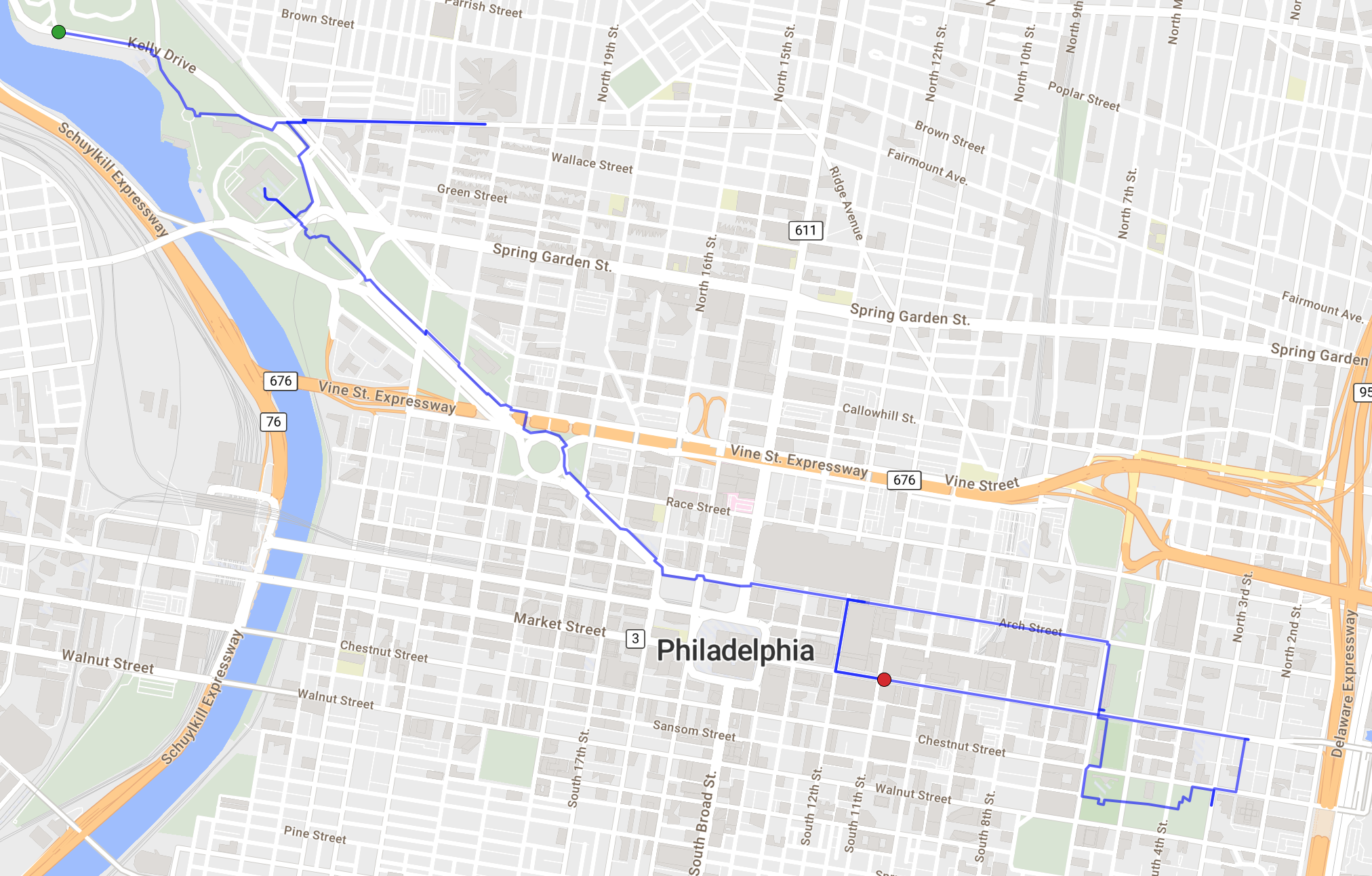
That took me past Boathouse Row, Philadelphia Museum of Art, Eastern State Penitentiary, Washington Monument Fountain, Rodin Museum, Parkway Central Library, Logan Square, Love Park, Reading Terminal Market, Sonny’s Famous Steaks for a Philly cheesesteak, and a load of spots in Independence National Historical Park.
The walk from Wissahickon Valley also included lots of historic buildings and bridges. A few highlights of the day follow.
Statue of Tedyuscung
At a point along the trail in Wissahickon Valley, there is a statue positioned fairly high up the valley, showing a Native American looking out over the valley. It’s a fairly huge statue, and I didn’t expect to come across it, but I’ve done some reading about it since. The history of the sculpture is here (the marble version I saw was dedicated in 1902), though apparently it’s a bit contentions with one local calling it “a monument to ignorance”.
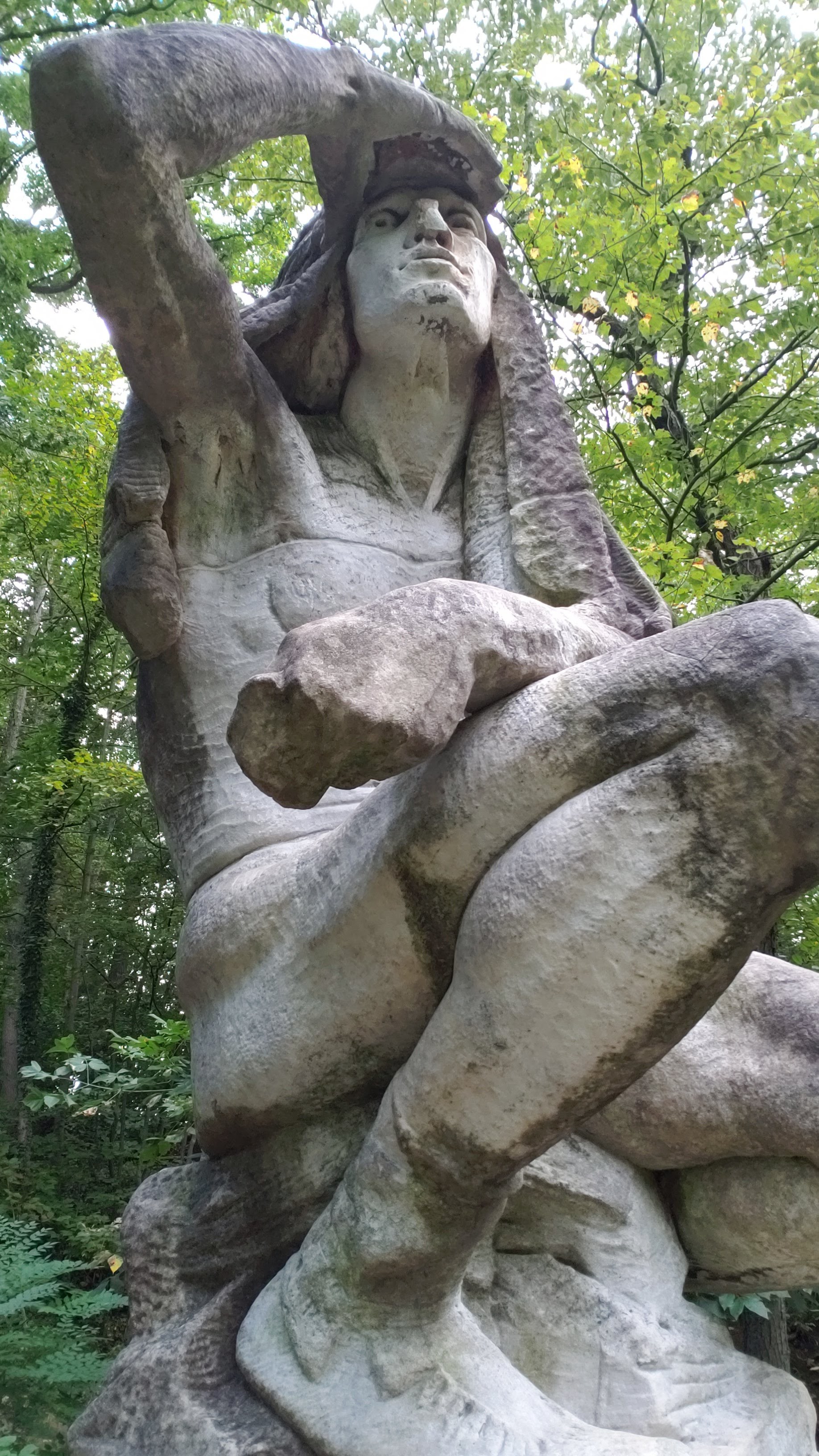
Eastern State Penitentiary
Eastern State Penitentiary was the first major prison based on the principle of keeping prisoners in solitary confinement. The idea was the inmates would practice penance through silent reflection upon their crimes and behaviour. The whole prison is designed around this idea. Inmates never saw anyone for the entire duration of their sentence. The walls are solid and at least a foot thick. Each prisoner has their own exercise yard. The guards even wore socks over their shoes so the silence wasn’t disturbed. This understandably went fairly terribly, with lots of inmates mental health taking a hit. The prison operated using solitary confinement from 1829 until 1913, and it closed in 1971.
The city council intended to redevelop it, but the site was abandoned for around a decade and fell to ruin. It was ‘stabilised’ before opening to the public as a museum in 1994, but large parts of the prison are as they were after the period of abandonment:
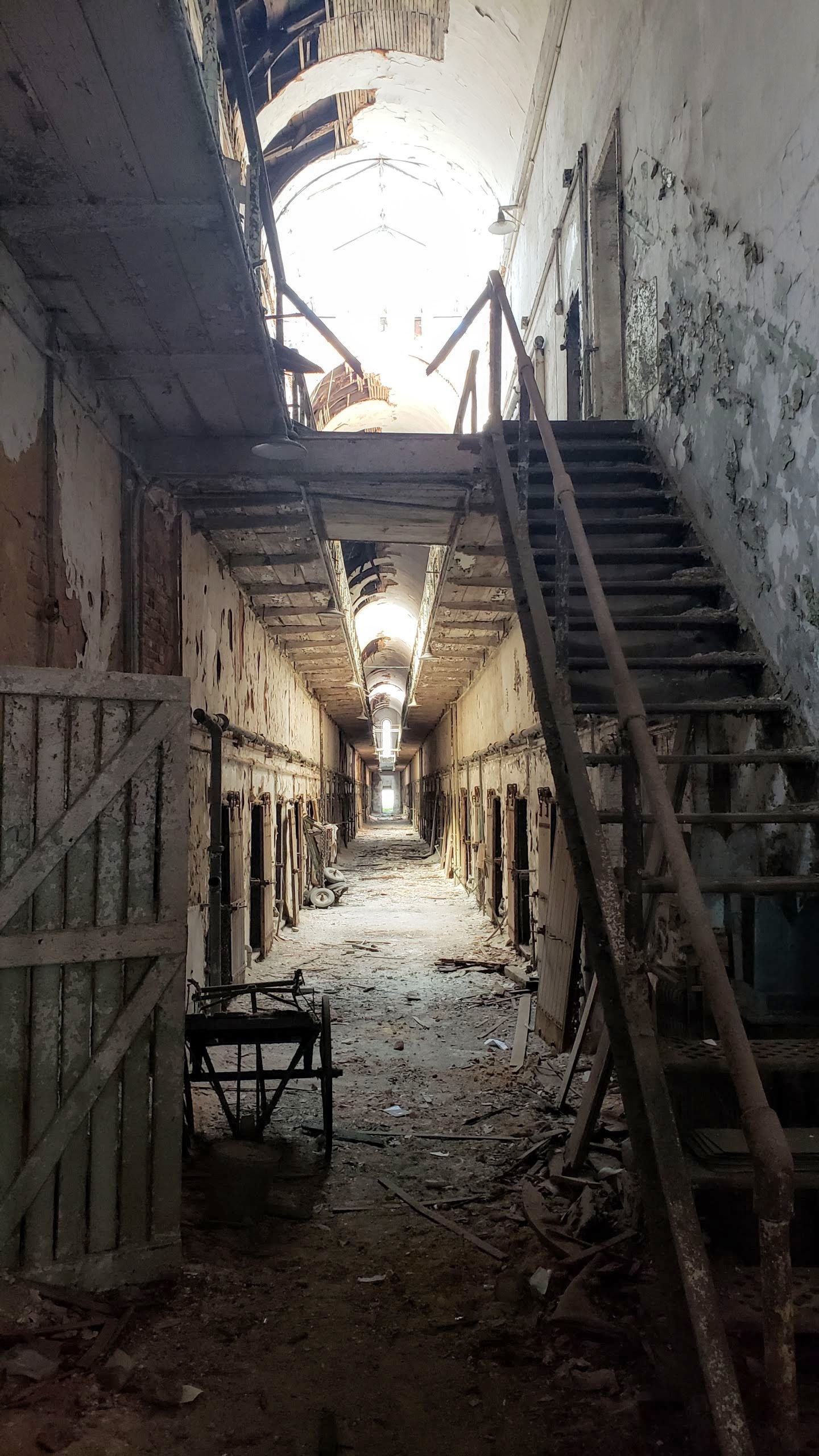
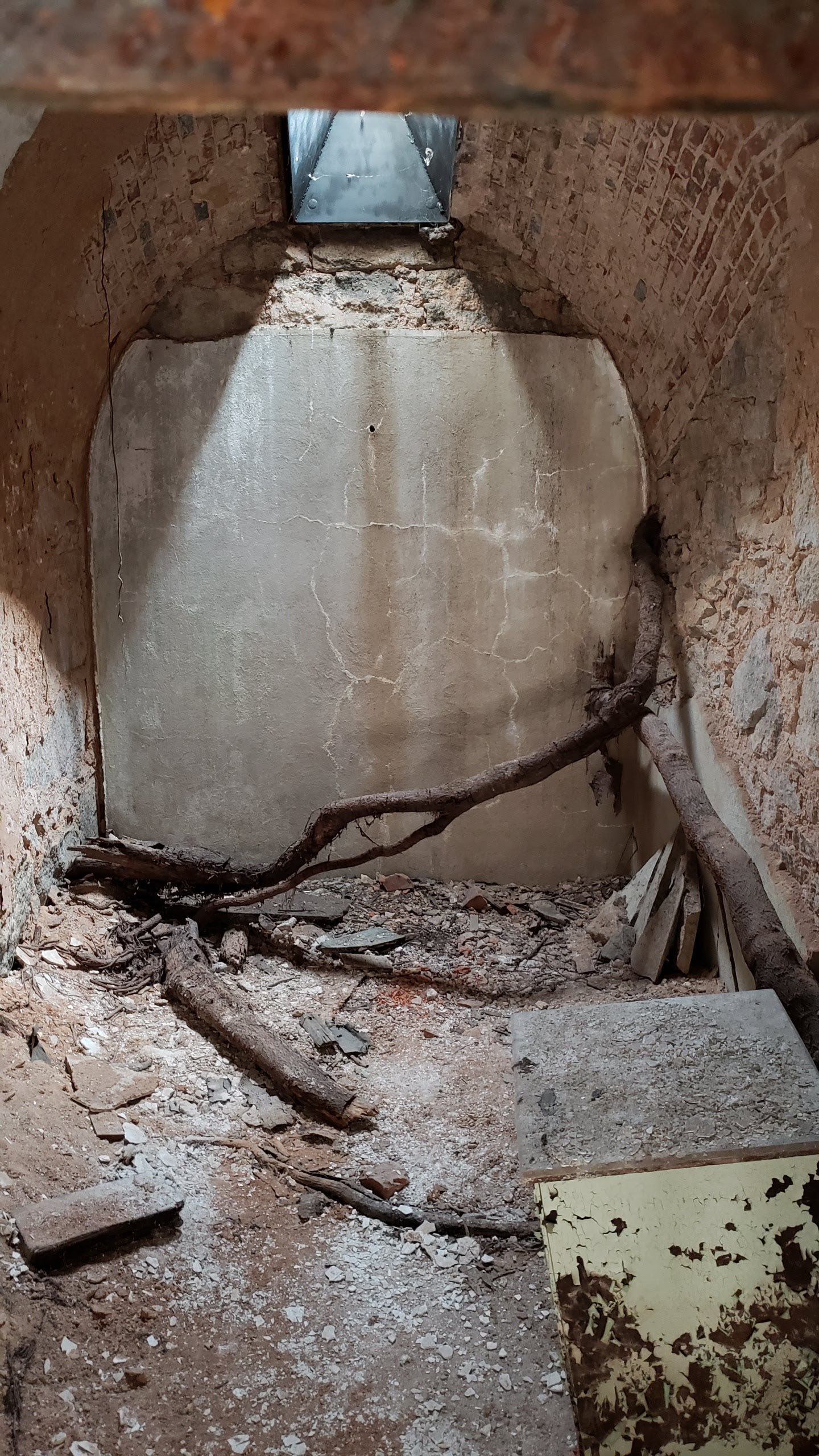
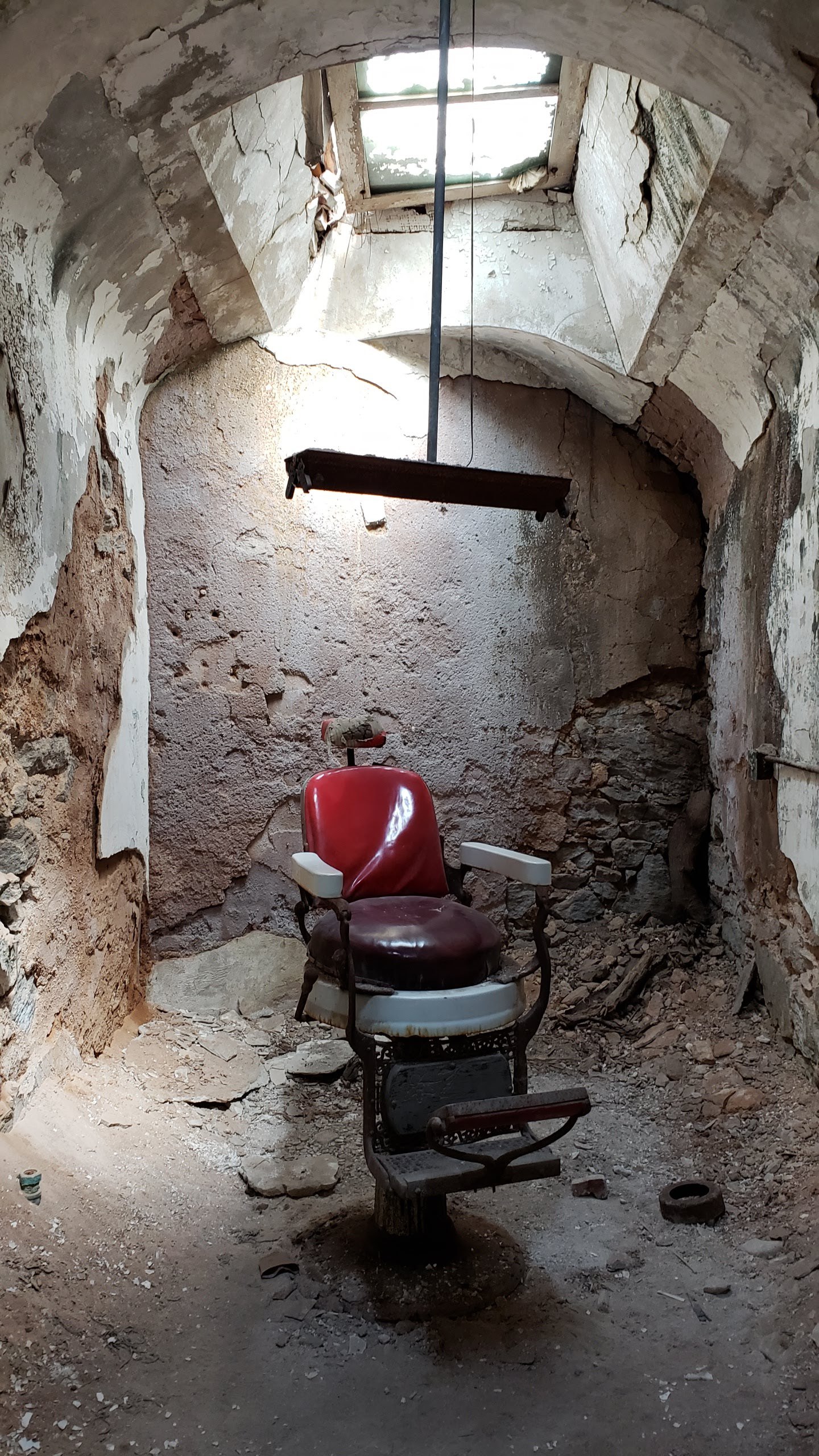
There was also an exhibit at the end of the tour about prisons today and mass incarceration, which was pretty sobering.
More photos from the day are in an album on Google Photos.